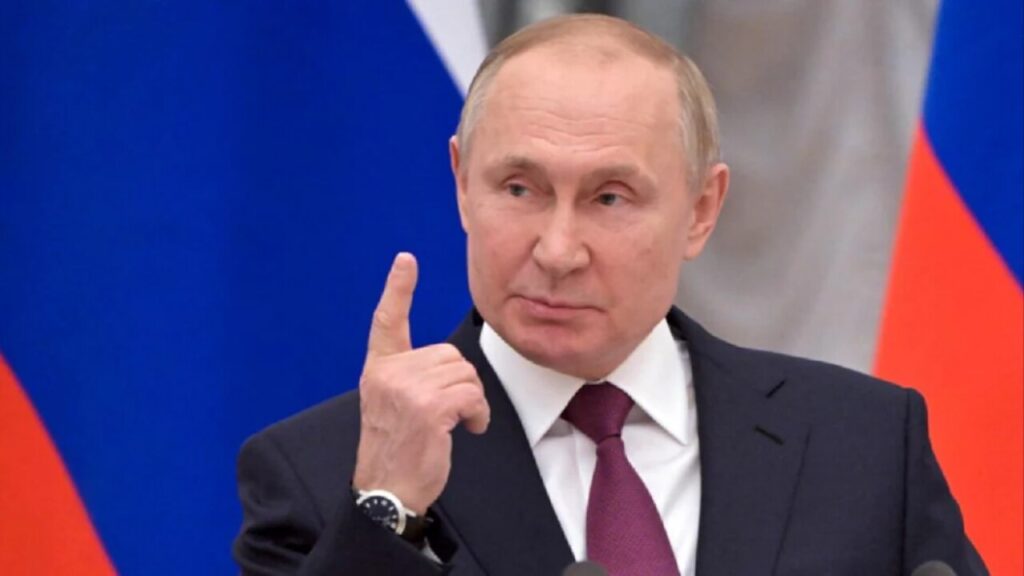Ukraine’s daring drone attack has shaken Russia, prompting speculation on whether Putin will resort to nuclear retaliation or seek another way to strike back.
Moscow: Ukraine’s unprecedented drone assault on June 1, 2025, codenamed Operation Spiderweb, struck five Russian airbases—Belaya, Dyagilevo, Ivanovo, Olenya, and Sevastopol—destroying 41 long-range bombers and causing $7 billion in damages, as claimed by Ukraine’s SBU intelligence agency. With President Vladimir Putin vowing a response to this “unprecedented provocation,” the world braces for potential escalation, possibly involving hypersonic Kinzhal missiles or nuclear-capable Yars missiles, amid fears of a third world war.
A Devastating Strike on Russian Pride
The attack, executed with 117 kamikaze drones smuggled into Russia over 18 months, targeted strategic bombers like the Tu-95 and Tu-22M, critical for Russia’s nightly raids on Ukraine. The operation, personally overseen by Ukrainian President Volodymyr Zelensky, penetrated 4,000 km into Russian territory, exposing vulnerabilities in Moscow’s air defenses. Ukrainian sources hailed the strike as a historic blow, with Zelensky stating, “This attack will be in history books as a testament to our resolve.” The timing, just before peace talks in Istanbul on June 2, has complicated diplomatic efforts, with Russia calling the strike a deliberate attempt to derail negotiations.
Putin’s Potential Retaliation Options
Despite Putin’s May 5, 2025, statement hoping to avoid nuclear weapons, the scale of this attack has shifted the calculus. Russia’s arsenal includes the Kinzhal hypersonic missile, previously used in Ukraine in March 2022, which travels at Mach 10 with a 2,000-km range. More alarmingly, the Yars missile can carry multiple independently targetable reentry vehicles (MIRVs) with thermonuclear warheads, each yielding up to 500 kilotons. Posts on X reflect fears of nuclear escalation, with some users citing Russia’s updated nuclear doctrine from November 2024, which allows for nuclear retaliation against conventional attacks threatening state infrastructure. However, experts like William Alberque from the International Institute for Strategic Studies argue that Putin’s decision to use nuclear weapons remains his alone, and operational controls on tactical nukes have not been loosened.
Historical Context and Escalation Patterns
Ukraine has taken bold risks before, reclaiming Kharkiv and Kherson in 2022, though Russia retaliated by annexing four more regions. A 2024 incursion into Kursk failed, with Ukrainian forces pushed back to Sumy Oblast. The Spiderweb operation follows this pattern of high-stakes gambles, but its success has humiliated Moscow. The Council on Foreign Relations notes that Putin’s 2024 actions, including military exercises testing non-strategic nuclear forces and launching a hypersonic missile in Ukraine, lowered the nuclear threshold. Russian analyst Vladislav Pozdnyakov warned that such an attack on strategic assets “gives Russia the right to use nuclear weapons,” though Putin’s May 2025 remarks suggest restraint unless NATO directly intervenes.
NATO’s Role Fuels Russian Ire
Russia attributes Ukraine’s success to NATO intelligence and weapons, particularly from Germany, a key alliance member. On May 28, 2025, German Chancellor Friedrich Merz pledged to help Ukraine develop long-range missiles, with Foreign Minister Jonan Wadeful hinting at supplying Taurus missiles with a 1,000-km range. Putin, in an August 14, 2024, speech, accused NATO of pushing the conflict to its “climax,” warning, “Our enemies will be destroyed.” The Bulletin of the Atomic Scientists highlights that NATO’s cautious approach—limiting Ukraine’s use of Western weapons—has given Russia a battlefield advantage, but increased support risks further provocation.
The Nuclear Threat and Global Fears
Putin’s March 2024 warning that NATO intervention could lead to “the destruction of civilization” looms large. U.S. President Donald Trump has cautioned that the conflict could spiral into World War III, a sentiment echoed by former CIA Director William Burns, who noted a near-nuclear crisis in late 2022. China and India, key Russian partners, have publicly opposed nuclear use, with a 2022 joint communique with China stating, “Nuclear war cannot be won and must not be fought.” The Union of Concerned Scientists warns that MIRV technology in Yars missiles increases the risk of crisis instability, as seen in Russia’s November 2024 non-nuclear MIRV strike in Dnipro.
What’s Next for Russia and the World?
Sun Tzu’s Art of War warning about prolonged conflicts draining resources resonates as Russia faces economic strain from sanctions and a $7 billion loss. A likely response may target Ukraine’s military and energy infrastructure, as seen in Russia’s May 25, 2025, drone-and-missile attack that killed seven and injured dozens. However, the Atlantic Council argues that bowing to Putin’s nuclear threats could set a dangerous precedent, making nuclear war more likely in the future. With peace talks faltering and NATO-Russia tensions at a peak, the global community holds its breath for Putin’s next move.


